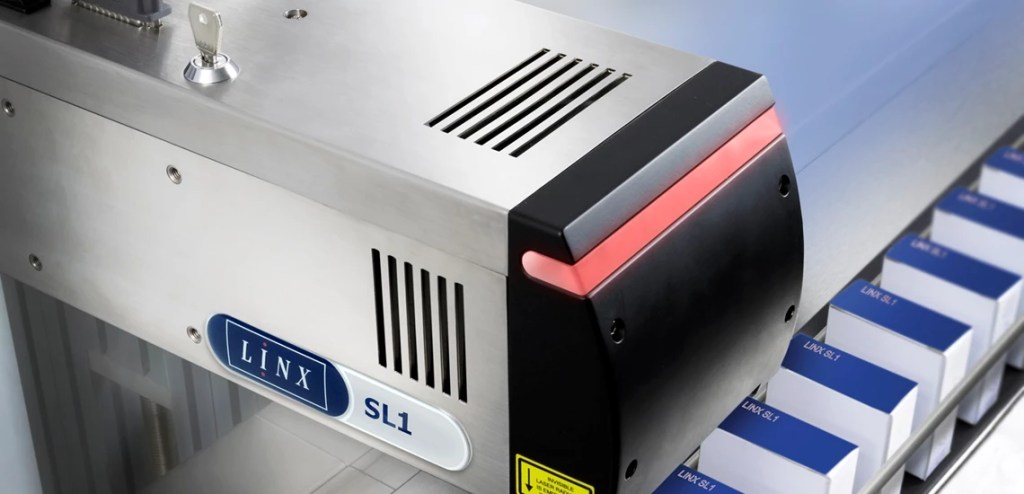Applications of Co2 and Fibre Laser Technology

Applications of Co2 and Fibre Laser Technology
In the world of industrial printing, choosing the right printer for your production line is crucial in not only achieving high quality results but also for the efficiency within the line itself. Specifically with regards to laser printing technology, two popular options are CO2 laser printers and fibre laser printers. Both technologies offer distinct advantages that make them suitable for specific applications, substrates, and environments. We wanted to compare the advantages of CO2 and fibre laser printers and provide insights into when and where each printer would be best suited so that you can make an informed decision. Our expert team are always on hand to provide further consultations, including free site visits so do get in touch if you have further questions!
Overview of CO2 Laser Printers
CO2 Lasers use a mixture of gases which are excited by an electric discharge. These lasers have a typical infrared output of 9.3 µm, 10.2 µm or 10.6 µm wavelength. They are widely used in the industrial printing industry for multiple applications, including in our CSL10, CSL30, CSL60 and SLHP models and have some clear benefits:
Versatility
CO2 laser printers are versatile and can handle a wide range of materials and applications. They are particularly effective for marking or engraving on organic materials such as wood, leather, glass, paper, and some plastics. Their ability to process intricate designs and fine details makes them popular in industries like packaging, signage, and product customisation.
Soft Material Processing
Due to their longer wavelength (10.6 micrometres), CO2 lasers are well-suited for processing soft materials. The heat generated during the engraving or cutting process is efficiently absorbed by the material, resulting in clean and precise cuts. This makes CO2 laser printers ideal for applications that involve delicate materials like fabric, rubber, and foam.
Cost-Effectiveness
CO2 laser printers are generally more cost-effective compared to fibre laser printers, especially for lower-power applications. They generally have lower maintenance requirements and consume less energy, making them an attractive option for small to medium-sized businesses.
Overview of Fibre Laser Printers
Fibre lasers are a special class of solid state lasers. Instead of a gas as the lasing medium, an optical fibre is used. The laser beam is generated and confined inside the core of the fibre, which is doped with ions such as ytterbium that is typically excited by a diode laser. This technological setup leads to an emission wavelength band of 1.05 µm to 1.08 µm with its centre at 1.06 µm.
High-Speed and Precision
Fibre laser printers excel in high-speed and high-precision printing applications. Their shorter wavelength enables them to produce smaller spot sizes, resulting in finer details and sharper edges. This makes them ideal for marking and engraving applications that require high-resolution images, barcodes, serial numbers, or QR codes.
Metal and Tough Material Processing
Unlike CO2 laser printers, fibre laser printers are exceptionally efficient at marking or engraving on metals and other tough materials. The high energy density produced by fibre lasers allows for rapid material removal and high-contrast markings on materials like stainless steel, aluminium, titanium, and other alloys. This makes fibre laser printers highly sought after in industries such as automotive, aerospace, and electronics.
Longevity and Maintenance
Fibre laser printers have longer lifespans compared to CO2 laser printers. They have solid-state designs, which means they do not require gas refills or the replacement of consumable parts like CO2 lasers. This results in reduced maintenance costs and downtime, making fibre laser printers a preferred choice for industrial printing operations that demand continuous and reliable production.
Choosing the type of Laser Printer
To determine whether a CO2 laser printer or a fibre laser printer is best suited for your industrial printing production line, the following factors may be valuable to take into account:
Application and Material
Identify the specific applications and materials you will be working with. If your primary focus is on soft materials, such as textiles or organic substrates, a CO2 laser printer would be a suitable choice. On the other hand, if you primarily deal with metals or tough materials that require high precision and high-speed printing, a fibre laser printer may be more applicable.
Throughput and Speed
Consider the required production throughput and speed. fibre laser printers offer faster marking speeds compared to CO2 laser printers, making them more suitable for high-volume production lines that require quick turnaround times.
Budget and Total Cost of Ownership
Evaluate your budget and the total cost of ownership, including maintenance and consumable expenses. CO2 laser printers tend to have lower upfront costs and maintenance requirements, making them a cost-effective option for small to medium-sized businesses. Fibre laser printers, while more expensive initially, may offer long-term cost savings due to their durability and reduced maintenance needs.
Choosing the right printer for your industrial printing production line is crucial for achieving optimal results. CO2 laser printers are versatile, cost-effective, and excel in processing soft materials. Fibre lasers, on the other hand, offer high-speed, high-precision printing and are ideal for tough materials like metals. By considering factors such as the application, substrate, and environment, you can make an informed decision on whether a CO2 laser printer or a fibre laser printer is the best fit for your specific requirements.
